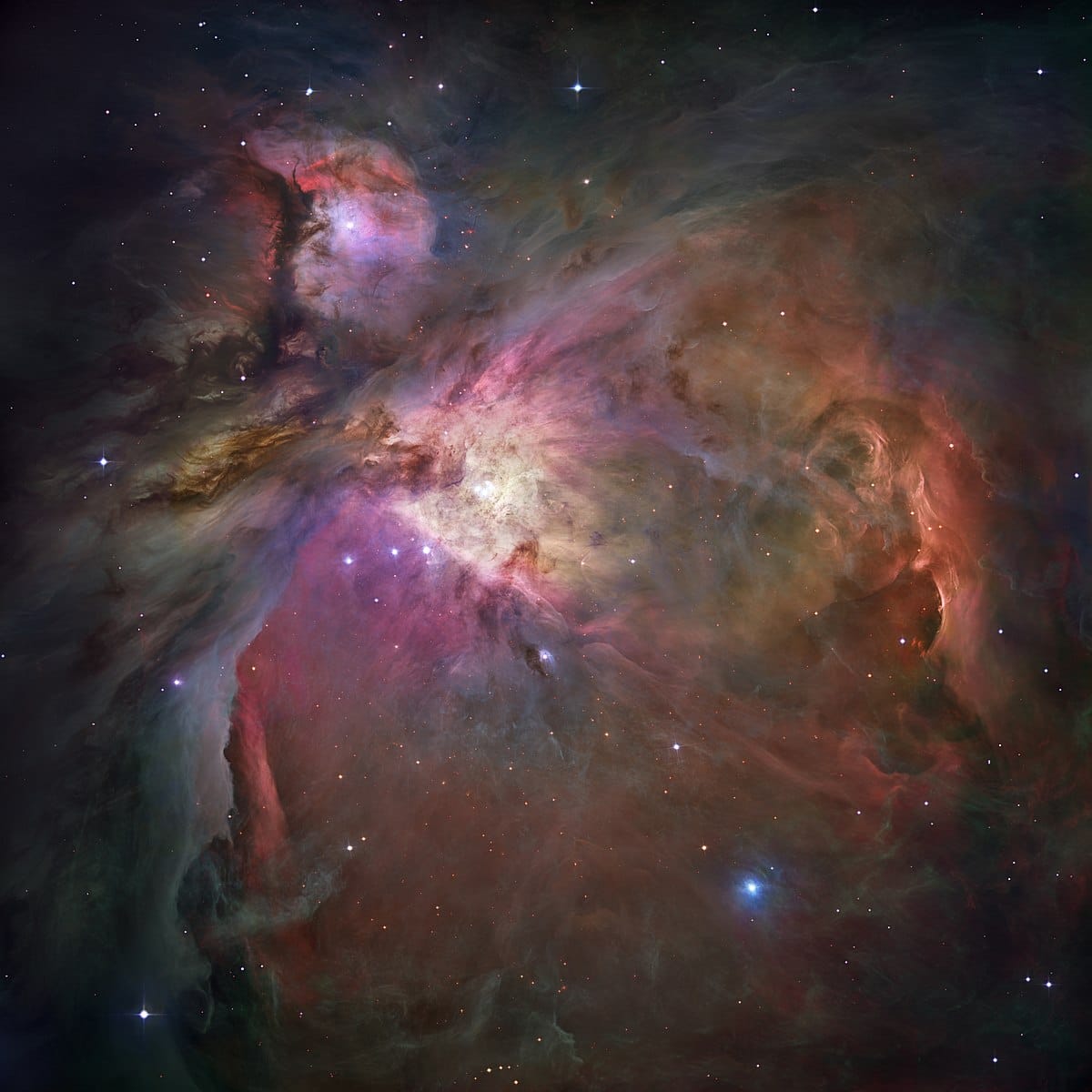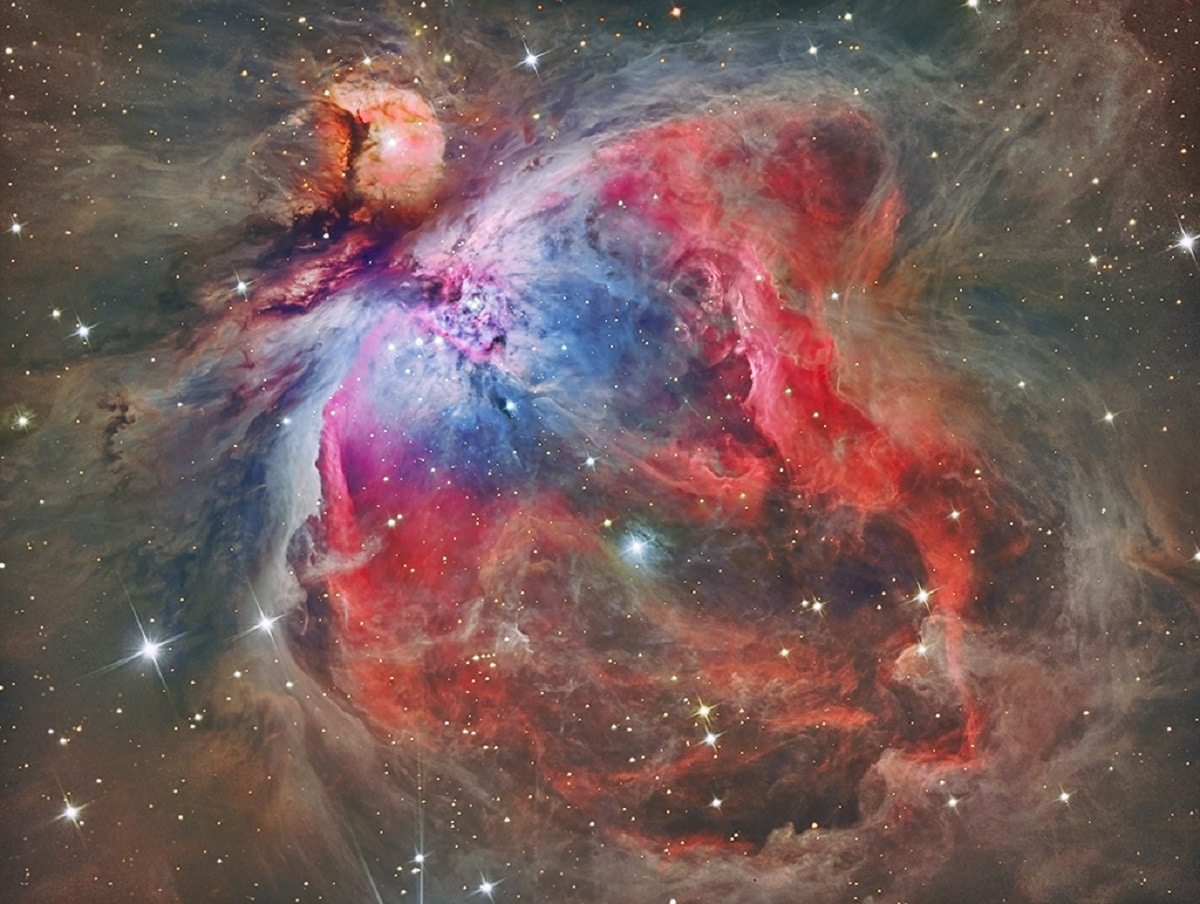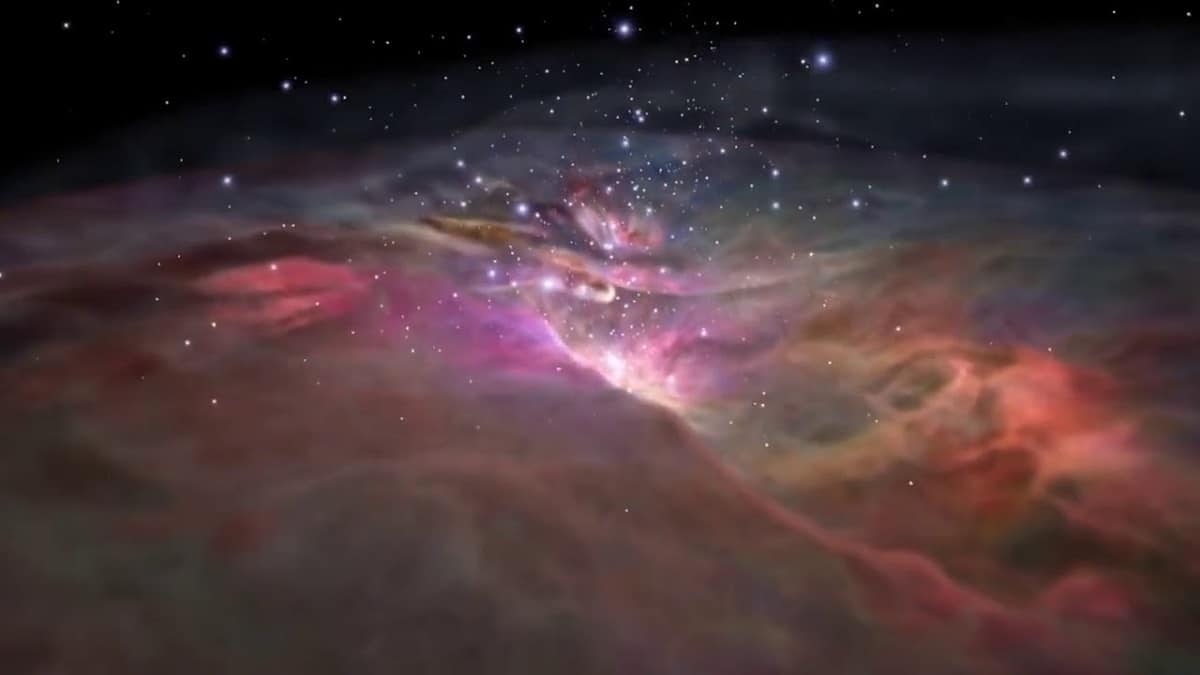
La Orion Nebula It is an emission nebula with a butterfly-shaped center. It lies just south of the constellation Orion and is easily visible to the naked eye as a faint white spot in the middle of Orion's belt.
In this article we are going to tell you all the characteristics, origin and importance of the Orion Nebula.
Key features

Named for their diffuse shape, nebulae are huge regions of space filled with interstellar matter (dust and gas). The Orion Nebula was first described by French astronomer Nicolas-Claude Fabri de Peiresc in 1610, although ancient civilizations such as the Maya have also recorded similar objects. Nevertheless, it cannot be determined that it is in fact the same Orion Nebula.
In fact, Galileo did not mention it, although it is known that he examined the region with a telescope and found some of the stars in it (called the Trapezium). Neither did other famous astronomers of antiquity.
But since it is now easily visible to the naked eye, the nebula may have been illuminated by the birth of new stars. It was cataloged by Charles Messier in 1771 as object M42, and can also be searched by this name on web and mobile astronomy apps.
From an astronomical point of view, nebulae like Orion They are important because stars are constantly forming there.. It is there, by virtue of gravity, that agglomerations of matter arise, which then condense and form the seeds of stellar systems. Inside the nebula, stars are constantly forming.
Location of the Orion Nebula

The Orion Nebula is relatively close to the Solar System at 500 parsecs (1 parsec = 3,2616 light years) or 1270 light years. It is located, as we say, in the Belt of Orion, which consists of three bright stars in the central diagonal of the quadrilateral constellation.
The three stars are Mintaka, Alnilam and Alnitak, although they are commonly known as the Three Marys or the Three Wise Men.
Seen from Earth, the angular diameter (the angular size of an object seen from Earth) of a nebula in the sky is about 60 arcminutes. On the contrary, Venus is an easily visible object that ranges from 10 to 63 arc minutes depending on the epoch, but appears brighter due to its proximity.
You can get an idea of the size of the nebula and its true brightness by comparing the distance: 1270 light years = 1,2 x 1016 km, while Venus is only 40 x 106 km from Earth.
How to observe the Orion Nebula?

The Orion Nebula is an emission nebula, which means that it emits light in the visible light range. It is visible in the east as early as sunrise in July, but the best times to see it are during the northern hemisphere winter or southern hemisphere summer.
Visible to the naked eye if the sky is dark and clear. While it is certainly visible from the big cities, it is best to stay as far away from light pollution as possible. Through binoculars or a small telescope, the nebula appears as a small pearlescent speck, although a slight pinkish tint can sometimes be seen. This is not the most common, since the eye is not as sensitive to color as photographic film.
This requires larger telescopes or taking long-exposure photographs, which are also often post-processed to bring out detail.
Still, even with just binoculars, the nebula is an astonishingly beautiful image, not to mention the stars being born within it at this very moment.
As mentioned above, finding the nebula is easy since Orion is one of the most famous constellations. Similarly, apps like Sky Map will show you where you are right away. With modern telescopes, you can program the search to automatically focus and position the trapezoid within it.
Discovery and origin
According to many sources, the ancient Maya would have noted the region of the celestial body where this nebula resides, which they called Xibalbá. According to his imagination, the gas cloud proved the existence of the furnace of creation.
The Orion Nebula was discovered by the West in 1610, by the Frenchman Nicolas-Claude Fabri de Peiresc, and by the Jesuit astronomer Cysatus de Lucerne in 1618. Much later, it was included in Charles Messier's Astronomical Catalog in 1771, corresponding to the name M42.
Thanks to the spectroscopy of William Huggins, its fuzzy signature was not discovered until 1865, and in 1880 his first astrophotography, that of Henry Draper, would be published. The first direct observation of the nebula came from the Hubble Space Telescope in 1993, and thanks to it (and its many follow-up observations), even later 3D models were made.
The colors of the Orion Nebula
To the naked eye, the nebula appears white, but sometimes, under the right conditions, the human eye can detect a slight pinkish tint. The true colors are visible in images taken with long exposures and come from the energy released by the excited molecules in the gas.
In fact, the temperature of the stars inside the nebula is about 25.000 K. As a result, they can emit enough ultraviolet radiation to ionize hydrogen, which is the main component of the region.
The combination of wavelengths (red, blue, and violet) emitted by the excitation of the gas molecules produces the distinctive pink color. Some images also show green areas, corresponding to different energy transitions that can only occur in places with the physical conditions of the nebula.
The Orion Nebula is of great astronomical importance due to the high activity of its stars. It contains a large number of stars that are forming inside it, called protostars.
Since this is a very short stage in the life of a star, it is not easy to find protostars to study. And because the Orion Nebula is so far from the plane of the Milky Way, what it contains is not easily confused with other celestial objects. For all these reasons, it is exhaustively studied by astronomers and astrophysicists.
I hope that with this information you can learn more about the Orion Nebula and its characteristics.